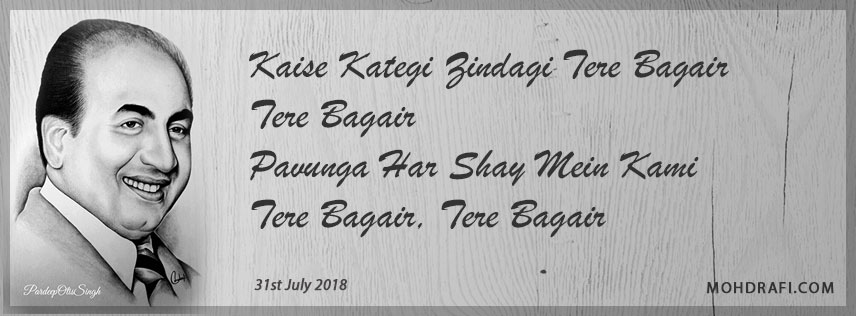His Undying Tenor Survives
A tribute to the musical genius on his 22nd death anniversary by Quamar Ashraf
Mohammad Rafi was one of the most versatile and talented singers that the world of music has ever produced . He is heard in different tones in a wide range of romantic, classical and devotional songs and ghazals, in genres as diverse as qawwalis and bhajans. His undying tenor survives him. He died on July 31, 1980. His fans are not confined to any national, religious, social or any other boundaries. Be it the maulvi or the pandit, old or young, rich or poor, a tomboy or a shy country damsel, philanderer or ideal lover, a politician or a simple man, millions of his fans in India and abroad love his songs.
His voice suits the naughty Shammi Kapoor, the sobre Dilip Kumar, the patriotic Manoj Kumar, the muscleman Dharmendra and romantic heroes like Rajendra Kumar and Rajesh Khanna. He moulded his voice to suit a broad range of actors. Be it a drunkard or a comedian or a player of tragic roles, Rafi Sahab tailored his voice to suit the actor’s natural pitch.
Born in a small village of Lahore district of Pakistan, Kotla Sultan Singh, on December 24, 1924, Mohammad Rafi ran away from home, to get training under maestros such as Bade Ghulam Ali Khan and Ustaad Abdul Waheed Khan.
Naushad, the music director, recalls: “A skimpy little boy in a white shirt came to see me in Bombay with a reference from someone I knew. He had a perpetual smile on his face. A little nervous, he confided that his greatest ambition was to sing with Kundan Lal Sehgal, the melody king of the 40s.”
And it was Naushad who used Rafi’s divine voice, giving him a chance to sing in two of his films, Noorjehan and Anmol Ghari. Though he first got a break to sing a Punjabi song, Soniye, hiriye nee tere yaad ne bahut sataya. He came into limelight with Suhani raat dhal chuki (Chaudhvin Ka Chand). He is unparalleled in his style. The last line of Sehgal’s song Mere sapnon ki raani, Roohi, Roohi, Roohi (Noorjehan), immensely impressed Feroz Nizami, another music director who signed him to sing the hit of the 40s, a duet, Yahan badla wafa ka bewafayee ke siva kya hai.
He was always ready to entertain jawans at the border. Pandit Nehru once invited him to Delhi. When Gandhiji was assasinated, he sang a song Suno suno aye duniya walon, Bapu ki yeh amar kahani. The song touched everyone and was a great hit.
In his 35 years of singing career, he sang over 26,000 songs in different Indian languages. He received Padam Shree in 1968. He won six Filmfare awards and the National Award for Jinhen naaz hai hind par woh kahaan hain (Pyaasa).
Returning from a recording for a Bengali film, he was struck down by a searing pain in the chest. The end came soon after that. However, the undying tenor of Rafi lives as warp and woof of our day-to-day lives.















Simply superb Mr Quamar Ashraf. Althgouh I read it late, the fragrance of your observation clothed in well chosen words took me back to my days of yores. In fact, I was making a docu on Rafi to showed on Rafi sb death anniversary. In the course of my research, this article really moved me. I will really like to invite on the show in Mumbai. I dont know your age, location or background, but I am sure you must be the one of greatest admierers of Rafi sb’s voice.
Asma Baig
Mumbai
Good piece, Quamar.
One of the best articles on Rafi I read in my life. The way the writer describes Rafi’s art was really splendid. The observation and selection of songs manifest the writers’ ability to judge a singer. Congrats Quamar Ashraf